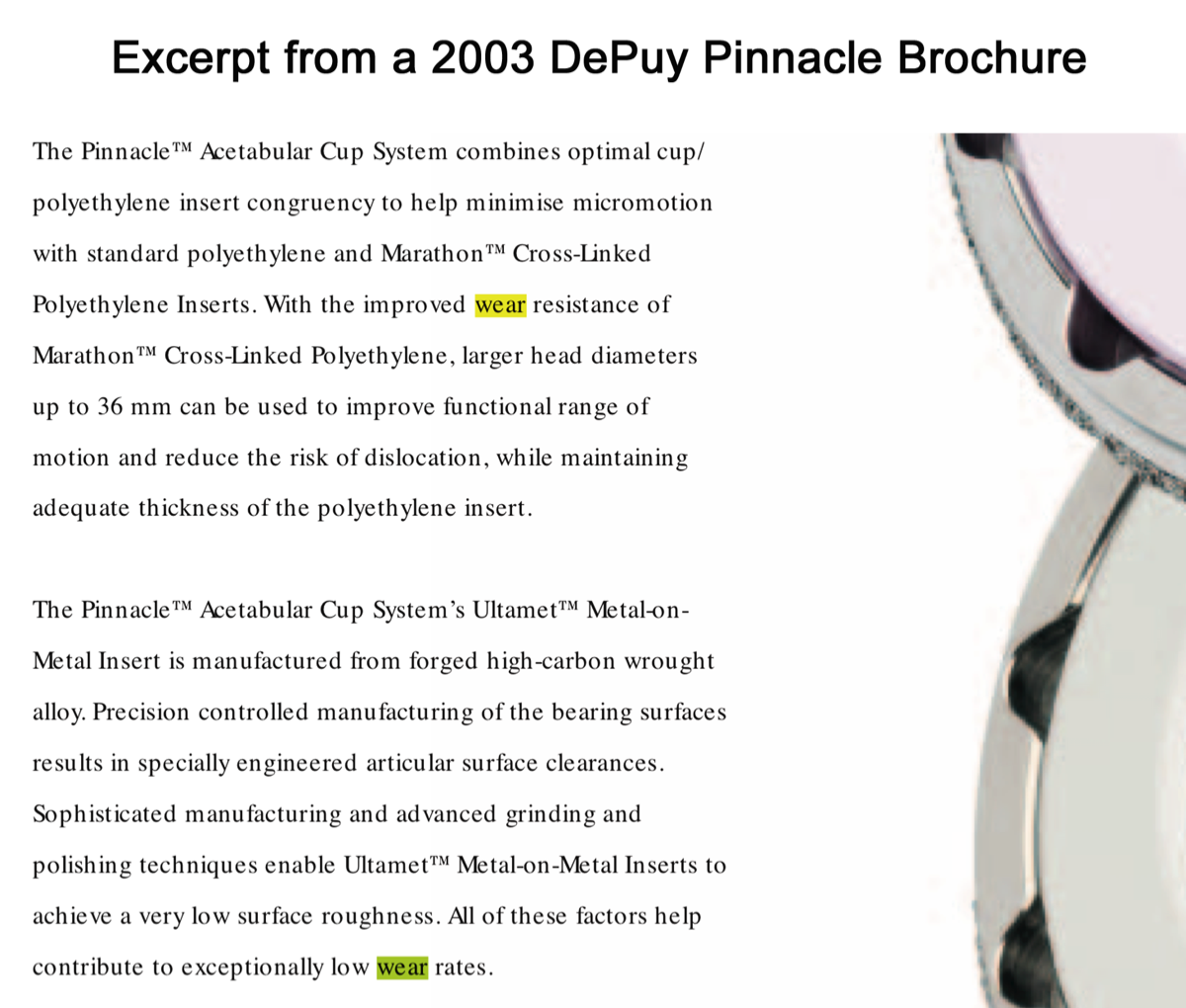Part 1
ARMD
"Accordingly, DePuy is not liable"
1. This first one deals with basic truths i.e. objective, undeniable, facts.
2. The second will deal with the way data was handled, and the incorrectly, and suspicious, perceived need for Swedish Hip Arthroplasty Registry Data - by DePuy's legal team.
3. The third will deal with "panic" about Metal on Metal (MOM) hips by the UK press, patients and surgeons in 2010 and after. There was no significant panic.
4. The fourth will prove and illustrate that DePuy's Pinnacle Ultamet hip was significantly less reliable, durable and safe than other hip prostheses.
5. The final part deals with the poisonous nature of the Pinnacle Ultamet prosthesis, and shows that there was a significant amount of data available many years before Ultamet was taken off the market … to prove how dangerous it was.
-0-
The Verdict
THE HONOURABLE MRS JUSTICE ANDREWS DBE included the following paragraphs in her verdict statement ...
20. i) The Claimants’ pleaded primary case is untenable. The inherent propensity of a MoM hip to shed metal debris through normal use, to which some patients may suffer an adverse immunological reaction, is not a “defect” in the product within the meaning of the Act and the Directive. It did not become a “defect” by reason of the recorded incidence of such adverse reactions or the calculated risk of the probability of the revision of the prosthesis on account of them.
20. ii) On their alternative case, the Claimants have failed to prove that the Pinnacle Ultamet prosthesis did not meet the level of safety that the public generally were entitled to expect at the time when it entered the market in 2002. The Court was unable to conclude on the balance of probabilities that there was a materially greater risk of a Pinnacle Ultamet prosthesis failing within the first 10 years after implant than a comparator prosthesis, and thus that the product carried with it an “abnormal risk” of damage.
20. iii) Accordingly, DePuy is not liable to the claimants.
-0-
A new car which regularly totally fails after 3 years would be classed as defective, based on comparison with other cars which last seven or more years without failure. It may have some good design features, but if it fails, and injures or kills people, it's defective.
The defects would be 'lack of safety and durability'.
The car would quickly be taken off the market, because of lack of demand.
That's exactly what happened to DePuy's Ultamet hip in 2013.
-0-

-0-
With regard to paragraph 20. i):
DePuy marketed their (old technology*) Ultamet hip, as a new approach to making hip prostheses last longer. Here's an extract from their 2003 brochure ...
* Metal on metal hips had been used since the 1960s

In 2006, my surgeon was impressed by the 'exceptionally low wear rates' idea.
There was neither mention of, nor warnings regarding, release of metal ions, or an Adverse Reaction to Metal Debris (ARMD) in the brochure
Identification of elevated metal ion levels in patients with Ultamet hips, after just 4 or 5 years revealed that the hip was neither durable nor safe, and actually had an exceptionally high wear rate.
It was the indicator of defects.
The defective performance was the low durability and safety of the prosthesis.
The cause and defect was its Cobalt Chrome alloy metal-on-metal bearing design.
P.S. In the extract from DePuy's 2003 brochure, please note the mention of Marathon Cross-Linked Polyethylene Inserts - it's important for Part 2 of this series.